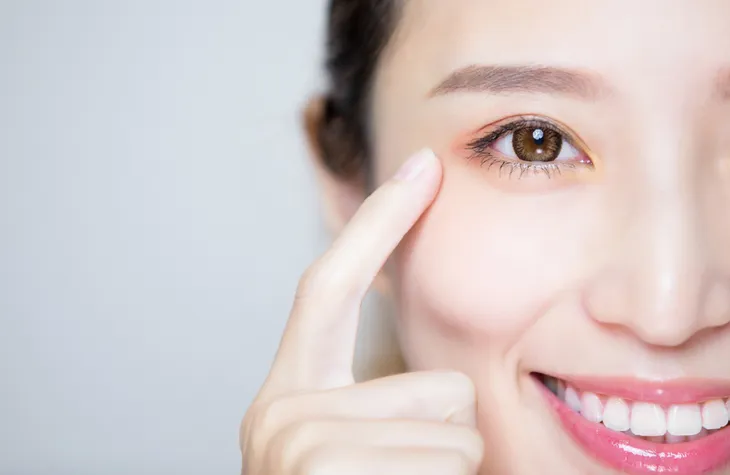Chances are you’ve never heard of Sjögren’s syndrome, a disease that impacts the moisture-producing glands of the human body. The result, dryness affecting the mouth and eyes, may sound more irritating than dramatic, but it can actually be quite life-changing in a very negative way. In some cases, Sjögren’s syndrome can lead to dryness in many other parts of the body, from the nose to the throat and the top layers of the skin.
Sjögren’s syndrome is primarily a female disease that’s most likely to appear in women past age 40. That said, it’s possible for anyone, no matter their race, age, or gender, to experience Sjögren’s syndrome. For these reasons, it’s important to learn more about this problematic disease, particularly if it affects you or someone you know. Six facts about Sjögren’s syndrome are…
Causes
Sadly, doctors don’t really know what causes Sjögren’s syndrome. Currently, theories about its origins in the body indicate that it may have something to do with one’s genetic makeup or exposure to a yet unknown type of virus or bacteria.
What we do know is that Sjögren’s syndrome is an autoimmune disease, meaning it hurts the immune system’s ability to fight off viruses and bacteria. In essence, it works against the body by mistaking certain glands of the body as some kind of foreign invader. The result is damage to those glands responsible for producing moisture in various parts of the body, from the mouth to the eyes and throat.
Symptoms
Sjögren’s syndrome is a disease that features one central theme: dryness. That’s because this autoimmune disease attacks the glands that help keep various parts of our body (from the eyes to mouth, throat, and nose) comfortably moist.
In some cases, Sjögren’s syndrome can result in even more parts of the body becoming dry, including the upper layers of skin. Eventually, this can result in painful rashes that make movement or exposure to the sun irritating or painful. Overt symptoms of Sjögren’s syndrome include painful joints, constant coughing, and joint and muscle pain. Some individuals may even suffer from problems affecting their internal organs, including the kidneys, stomach, and nerves. Together, all of this can leave the typical Sjögren’s syndrome patient exhausted, both mentally and physically.
Evaluation of medications
One of the first steps a physician will take when examining a patient for Sjögren’s syndrome is a careful evaluation of the medications the individual is using. This is because many medications for other ailments cause significant dryness in the eyes and mouth. Remarkably, simply taking a patient off these medications may be enough to visibly alleviate the symptoms associated with Sjögren’s syndrome.
There are a number of drugs that can cause dryness in some form or another. For example, decongestants used to treat colds and allergies, diuretics used to treat diarrhea, antidepressants used to treat anxiety and depression, and even blood pressure medication.
Diagnosis
Doctors will use several methods to determine if a patient has developed Sjögren’s syndrome. The first involves evaluating the symptoms, starting with instances of dry mouth, dry eyes, dry skin, dry throat, etc. A thorough physical exam can help a physician determine if this dryness is temporary or part of something more serious, such as Sjögren’s syndrome.
Should a physician have an inkling that the problem is related to Sjögren’s syndrome, they will examine the patient’s medical history, family medical history, and order a series of tests. These tests will examine the patient’s blood, saliva and urine to determine if an autoimmune disease is active in the body. An X-ray may also be used to see if there are any internal problems related to the patient’s discomfort.
 novak.elcic / Shutterstock
novak.elcic / ShutterstockTreatment
Sjögren’s syndrome remains a somewhat mysterious disease, and it affects patients in a variety of ways. As a result, physicians will customize their treatment plan for each individual that’s affected by the autoimmune disease.
For example, if the patient is complaining about dry eyes, the physician may recommend the use of artificial tears (essentially medicated eye drops) and may consider prescribing medications that help in the development of moisture around the eyes. Meanwhile, patients with extensive dry skin issues may be prescribed ointments to soothe the skin and restore its moisture levels, and those suffering from a mixture of these symptoms may be prescribed medications designed to suppress inflammation, which can directly affect moisture production in the body. Generally, physicians will attempt to avoid surgery, which comes with the risk of complications, but it may be necessary in extreme cases; for example, if eye dryness is particularly chronic and uncomfortable, doctors may use surgery to close the ducts that whisk tears away from the eyes, thereby helping keep them moist for longer.
Future work
Currently, medical researchers are working hard to learn more about Sjögren’s syndrome, including its central causes. To reach this lofty goal, researchers are focusing much of their attention on two general areas: first, genetics and gene therapy, and second, bacteria and viruses.
Of course, research into the functionality of the immune system (and how autoimmune diseases like Sjögren’s syndrome emerge) are also an important part of learning more about this disease. Finally, examinations of the body’s hormones could help give medical specialists the tools they need to more effectively treat Sjögren’s syndrome in the future.








